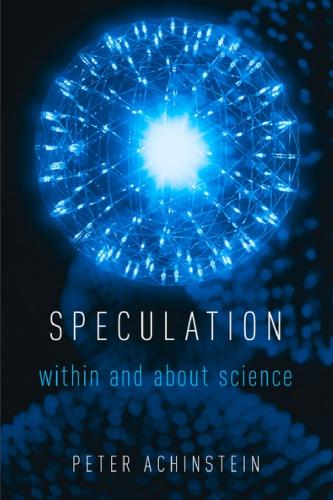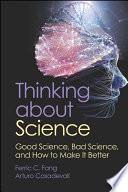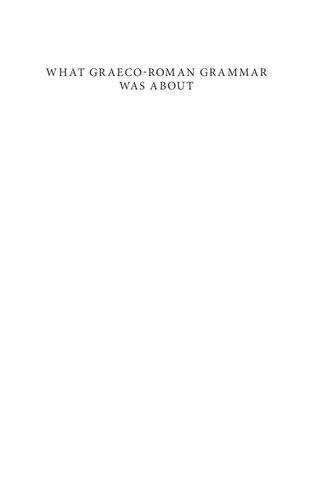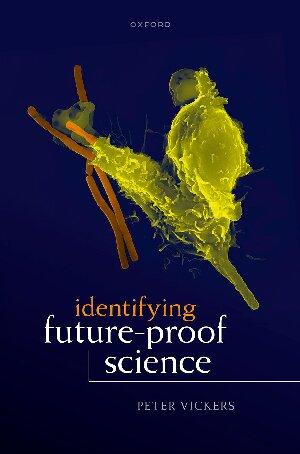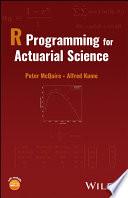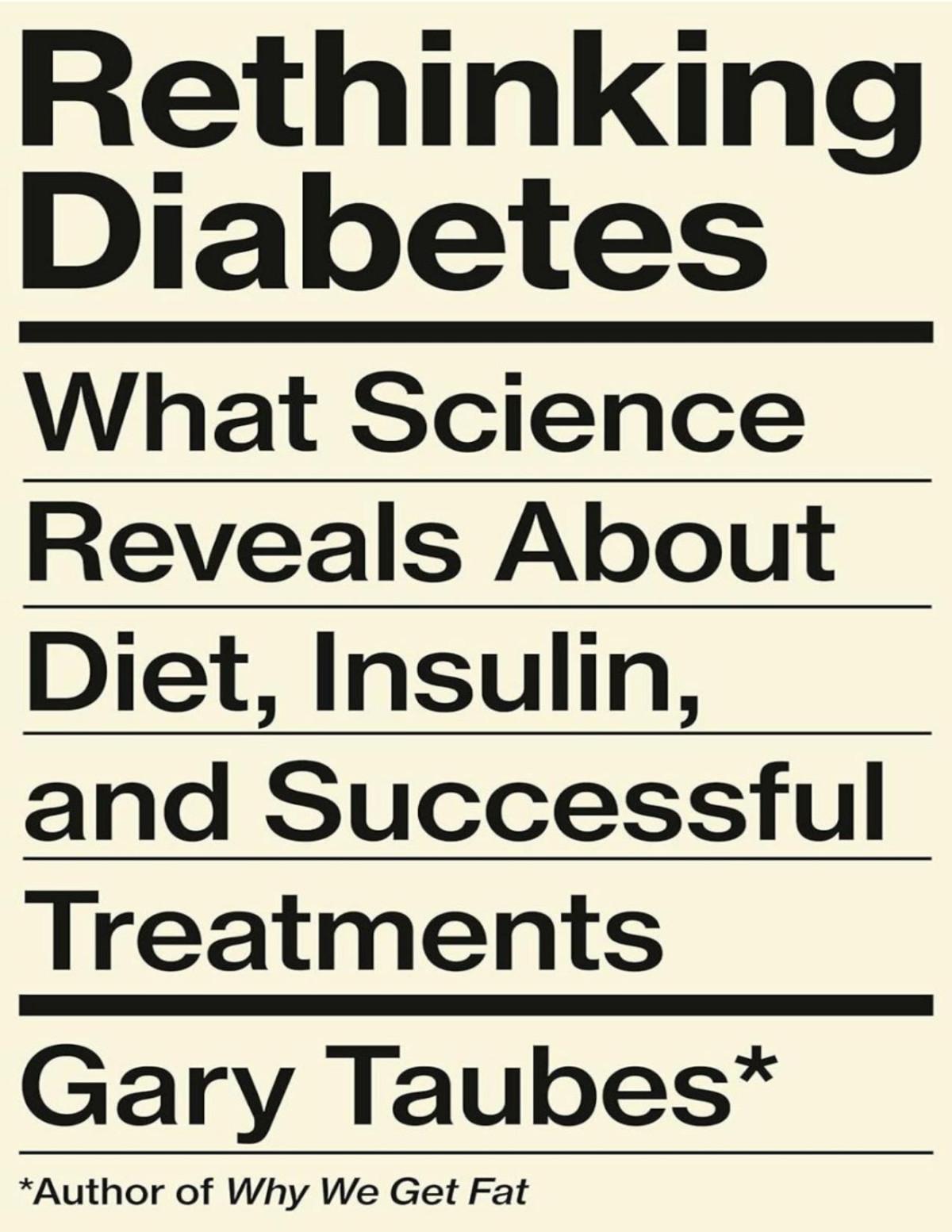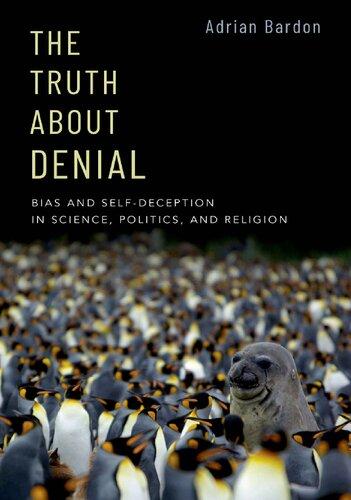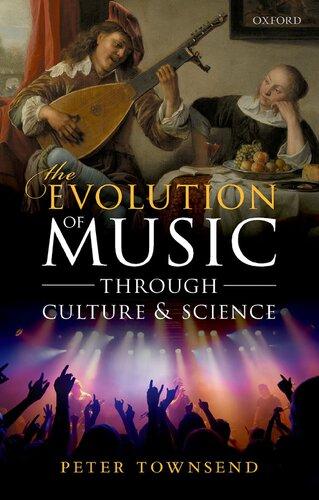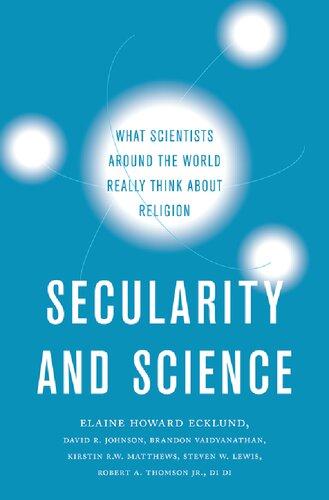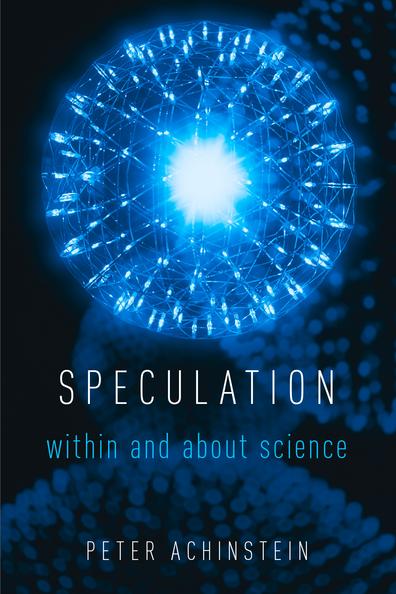PREFACE
Every problem has a solution, and every solution has a problem. That’s why there is speculation. It’s easier to do and has fewer problems. That’s also why, according to some scientists, philosophers speculate while scientists test and prove. Philosophical claims are often just too vague, too general, too abstract, and too numerous to be tested and proved. When they become more precise, less general, more concrete, and less numerous, they are candidates for scientific investigation. They become capable of verification. Therefore, according to some of the greatest defenders of science, scientists have no need to speculate, and should completely avoid such a loose and unregulated activity.
This is not the only view about speculation that has been advocated by great thinkers. A contrasting one is that speculation is crucial when you are trying to come up with an explanation of a group of observed phenomena. For the activity to be scientific, however, it must be followed, as soon as possible, by an attempt to test and prove the speculation
by experiment and observation. Proponents of this view say that the speculating stage should be subject to no rules or constraints whatever. Scientists should be given free license to invent even the wildest speculations. Rules and constraints enter in the testing stage.
A third view is much more liberal than the other two. It agrees with the second view in saying that speculation is crucial and is not subject to rules and constraints, but it disagrees with views one and two about testing. It says that speculation is crucial in science especially in the absence of testing and proof—indeed, when no tests have been made or even planned. It is an important way of finding fault with currently accepted theories, and it can lead to new ways of thinking that may turn out to be fruitful and even right. What shall we make of these contrasting positions? To answer this question and others to be raised, we first need to decide what a speculation is. Can this idea be defined in some reasonable way so that what counts as a speculation will match pretty well with claims that scientists and others have classified as speculations? This is no easy task. Even though there are philosophers and scientists who hold strong views about the value of speculating and about when, if ever, to do so, I find it surprising that they rarely attempt to define the concept about which they have such views. Or, if they do, they count as a speculation whatever fails to satisfy their favorite rules of scientific method. So, my first task will be to provide a clarifying definition that does not presuppose any one particular view of scientific method. Assuming that such a definition can be formulated, what attitude should be taken with regard to speculations so defined? Is speculating in science legitimate or not? If it is legitimate, is it subject to
rules and constraints? Can speculations be evaluated even in the absence of proof?
I will start with scientific speculations—ones made by scientists about specific constituents of the physical world and the laws governing them, e.g., nineteenth-century speculations about the existence of light waves and an ether in which light is waving, and twentieth- and twenty-firstcentury speculations about the existence of strings vibrating in 10-dimensional spacetime. Later, I will argue in some detail that Newton’s law of gravity, despite his vehement claims to the contrary, was indeed a speculation. I will also consider much broader speculations made by scientists or philosophers, or both, about the physical world and methods to be used in finding out about that world. These include the claim that nature is simple and that simplicity is an epistemic virtue (claims made by Newton and Einstein in support of theories they propose); that scientific theories can only be confirmed “holistically” and not by establishing individual propositions within them (Whewell, Duhem, Quine); and that there is and must be a “Theory of Everything”—a theory that can explain all phenomena by reference to fundamental laws governing the universe and fundamental objects in that universe (various physicists, especially string theorists, and various philosophers, especially those who preach a strong form of reductionism). These are all speculations, in a sense I will give to that term. That, I will suggest, is not enough to throw them out. But it is not enough to praise them, either. What attitude should we take toward speculations, and why? My answer will reject all three views mentioned above (“don’t speculate,” “speculate, but test,” and “speculate like mad even if you can’t test.”)
I have contrasted speculation with proof. But “proof” is too strong a term here because it suggests certainty. If speculations are understood simply as claims that have not been proved, too many scientific claims would be speculations. What scientists typically supply is evidence. And what they want, if they can get it, is evidence that provides a good reason to believe a claim they are making. If such evidence is lacking for a claim, then the latter might well be considered a speculation. At least that is the general idea of speculation I want to develop, make precise, and defend. To do so, I will need to talk about evidence itself, a concept I have examined in detail in other works.1 “Evidence,” I argue, has several different senses, each of which can be defined by reference to a basic concept I call “potential evidence,” which I define using an objective epistemic concept of probability and a concept of “correct explanation,” which I also define.2 However, my purpose in the present work is not to develop or defend these concepts further but, rather, to use them to help us understand the idea of speculation, to show how speculations are to be evaluated as speculations, and to evaluate various “grand” and “less grand” speculations, including the ones mentioned above, that have been made by scientists and philosophers. For readers not familiar with my concepts and definitions of evidence and explanation, I will explain them briefly when they are introduced. William Whewell regarded speculation as crucial to science. The “tendencies of our speculative nature” lead the
1. See Peter Achinstein, The Book of Evidence (New York: Oxford University Press, 2001).
2. See Peter Achinstein, The Nature of Explanation (New York: Oxford University Press, 1983).
greatest scientists to produce the most important ideas. “Advances in knowledge,” he writes, “are not commonly made without the previous exercises of some boldness and license in guessing.”3 Yes, Whewell argues, speculations have to be proved, but that is a task in the “testing” stage of scientific practice. The first stage is discovering and proposing the ideas to be tested, which is not subject to constraints, he claims. The second stage, the testing one, requires those ideas to be proved or disproved. Is that all there is to it? If not, what else is there?
James Clerk Maxwell, one of physics’ greatest speculators, held strong pragmatic views about how and when to speculate and how to evaluate speculations as such. He put them into practice when theorizing about electricity and molecules. In this book, I will invoke some of Maxwell’s speculations in physics, particularly those about molecules, and his philosophical views about speculating. Like him, I will take a pragmatic approach. (For what this means, and how such an approach works in the case of speculations, the reader is invited to keep reading.) Unlike Maxwell, Isaac Newton held a non-pragmatic opinion about speculation in his “Rules for the Study of Natural Philosophy” and “General Scholium” in Book 3 of the Principia. Briefly expressed: Prove, never speculate! His practice, however, is somewhat different, as I will argue, even with respect to his greatest accomplishment, the law of gravity. Newton and Maxwell both engaged in speculation, and both defended important positions on the topic
3. William Whewell, The Philosophy of the Inductive Sciences, Founded upon their History, 2 vols. (London: John W. Parker, 1840); parts of vol. 1, chap. 5, are reprinted in Peter Achinstein, Science Rules (Baltimore: Johns Hopkins University Press, 2004), 150–167.
that are well worth examining. Their views are among those that will be considered in determining what attitude we should take toward speculation. Unlike the suggestion at the beginning, I will argue that speculation is an essential part of science, not just philosophy, and it is not easy to do, or at least to do well. But, by contrast with those scientists and philosophers who are in favor of speculation and hold the second and third views noted earlier, it is not, nor should it be, done freely and without constraints.
ACKNOWLEDGMENTS
I am indebted to Justin Bledin, Richard Dawid, Steven Gimbel, Fred Kronz, and Richard Richards for reading the entire book or parts thereof and making important comments and criticisms. I also want to thank students in my Spring 2017 graduate seminar for their participation in the study and activity of speculating. That seminar included two who thankfully agreed to read proofs: Maegan Reese and Richard Teague; they did so with expertise. Finally, my deepest appreciation is to Isaac Newton and James Clerk Maxwell not only for their monumental speculations, but also for their clashing philosophical views about speculating.
2. THREE SPECULATIONS FROM PHYSICS
Let me begin with three examples from the history of physics, together with claims of their detractors who reject or at least criticize them not because they are false or refuted but because they are speculations.
a. Thomas Young’s Wave Theory of Light
In 1802, Thomas Young published “On the Theory of Light and Colours,”1 in which he resuscitated the wave theory of light by introducing four basic assumptions: first, that a rare and highly elastic luminiferous ether pervades the universe; second, that a luminous body excites undulations in this ether; third, that the different colors depend on the frequency of the vibrations; fourth, that bodies attract this medium so that the medium accumulates within them and around them for short distances. With these and other assumptions, Young shows how to explain various observed properties of light.
In 1803, Henry Brougham, a defender of the particle theory of light, wrote a scathing review of Young’s paper, in which he says:
As this paper contains nothing which deserves the names either of experiment or discovery, . . . it is in fact destitute of every species of merit. . . . A discovery in mathematics, or a successful induction of facts, when once completed, cannot be too soon given to the world. But . . . an hypothesis is a work of fancy, useless in science, and fit only for the amusement of a vacant hour.2
Brougham defends the Newtonian particle theory of light on the grounds that it is inductively supported by experiments, and he rejects Young’s wave theory on the grounds that it is mere speculation.
1. Thomas Young, “On the Theory of Light and Colours,” Philosophical Transactions of the Royal Society 92 (1802): 12–48.
2. Henry Brougham, Edinburgh Review 1 (1803): 450, 455.
4 | S PECULATION : W ITHIN AND A BOUT S CIENCE
b. William Thomson (Lord Kelvin): Baltimore Lectures on Molecules and the Wave Theory
of Light
In 1884, Sir William Thomson delivered a series of lectures at Johns Hopkins University on “molecular dynamics and the wave theory of light.” His aim was to provide a molecular interpretation for the luminiferous ether postulated by the wave theory. He assumes that there is an ether and that its properties can be described mechanically. He writes:
It seems probable that the molecular theory of matter may be so far advanced sometime or other that we can understand an excessively fine-grained structure and understand the luminiferous ether as differing from glass and water and metals in being very much more finely grained in its structure.3
He proceeds by offering various mechanical models of the ether to explain known optical phenomena, including rectilinear propagation, reflection, refraction, and dispersion.
In his 1906 classic The Aim and Structure of Physical Theory,4 Pierre Duhem excoriates Thomson for presenting a disorderly series of contradictory models (as, he claims British minds, incapable of continental (meaning French) orderliness, are wont to do), for invoking occult causes, and for not producing a “system of principles, which aim to
3. Reprinted in Robert Kargon and Peter Achinstein, eds., Kelvin’s Baltimore Lectures and Modern Theoretical Physics (Cambridge, MA: MIT Press, 1987), 14.
4. Pierre Duhem, The Aim and Structure of Physical Theory, trans. Philip P. Wiener (Princeton, NJ: Princeton University Press, 1954, 1982).
represent as simply, as completely, and as exactly as possible a set of experimental laws” (p. 19). Duhem writes:
The multiplicity and variety of the models proposed by Thomson to represent the constitution of matter does not astonish the French reader very long, for he very quickly recognizes that the great physicist has not claimed to be furnishing an explanation acceptable to reason, and that he has only wished to produce a work of imagination.5
Again, the complaint is that we have a theory, or set of them, that are pure speculations, and ones of the worst kind, since they lack order and simplicity.
c. String Theory
Characterized by some of its proponents as a “Theory of Everything,” it attempts to unify general relativity and quantum mechanics into a single framework by postulating that all the particles and forces of nature arise from strings that vibrate in 10-dimensional spacetime (according to one prominent version) and are subject to a set of simple laws specified in the theory. The strings, which can be open with endpoints or closed loops, vibrate in different patterns giving rise to particles such as electrons and quarks. The major problem, or at least one of them, is that there are no experiments that show that strings and 10-dimensional spacetime exist. The theory is generally regarded, especially by its critics, as being entirely speculative. Steven Weinberg, 5. Duhem, Aim and Structure, chap. 4, sec. 5.
6 | S PECULATION : W ITHIN AND A BOUT S CIENCE
once an enthusiastic supporter of string theory (as the “final theory”) in 2015 writes:
String theory is . . . very beautiful. It appears to be just barely consistent mathematically, so that its structure is not arbitrary, but largely fixed by the requirement of mathematical consistency. Thus it has the beauty of a rigid art form—a sonnet or a sonata. Unfortunately, string theory has not yet led to any predictions that can be tested experimentally, and as a result theorists (at least most of us) are keeping an open mind as to whether the theory actually applies to the real world. It is this insistence on verification that we mostly miss in all the poetic students of nature, from Thales to Plato.6
As these examples illustrate, speculations are assumptions normally introduced in the course of activities such as explaining, unifying, predicting, or calculating. Young sought to explain, or at least to see whether it is possible to explain, known phenomena of light by a theory other than the particle theory. Kelvin was attempting to provide a molecular account of the ether, and in terms of this, to explain the known optical phenomena. String theorists want to explain and unify the four known fundamental forces and calculate the fundamental constants of nature. In the course of doing so, they introduce speculative assumptions. There are two sorts of speculations I want to distinguish. The first, and most common, are made by speculators who, without knowing that there is evidence (if there is), introduce assumptions under these conditions: (a) They believe that the assumptions are either true, or close to the truth, 6. Steven Weinberg, To Explain the World (New York: Harper, 2015), 14.
or possible candidates for truth that are worth considering. (b) They introduce such assumptions when explaining, predicting, unifying, calculating, and the like, even if the assumptions in question turn out to be incorrect.7 I will call (a) and (b) “theorizing” conditions. Assumptions introduced, without knowing that there is evidence for them, but in a way satisfying these conditions, I will call truth-relevant speculations. They are represented by the three examples just given.
In other cases, assumptions, without evidence, are introduced in the course of explaining, predicting, unifying, etc., but their introducers do not believe that they are true, or close to the truth, or even possible candidates for truth. Indeed, it is often believed that they are false and cannot be true. A good example, which I will discuss in section 12, is Maxwell’s imaginary fluid hypothesis introduced in his 1855 paper “On Faraday’s Lines of Force.” Here, to represent the electromagnetic field, Maxwell describes an incompressible fluid flowing through tubes of varying section. The fluid is not being proposed as something that exists or might exist. It is, as Maxwell says, purely imaginary. Its purpose is to provide a fluid analogue of the electromagnetic field that will help others to understand known electrical and magnetic laws by employing an analogy between these laws and ones governing an imaginary fluid.
Another prominent example of this second type of speculation is atomic theory as viewed by some nineteenthcentury positivists. They employed the assumptions of atomic theory not as ones they believed to be true, or close
7. Anti-realists can substitute “empirically adequate” for “true” and “correct.” I don’t want to provide an account of speculation just for realists.
to it, or as possible candidates for truth, but as fictions useful for explaining, predicting, and unifying certain observable phenomena.8 For them, as for Maxwell in the imaginary fluid case, no evidence is given for the truth of the assumptions introduced. Indeed, evidence is irrelevant, since truth is. I will call these truth-irrelevant speculations. Both truth-relevant and truth-irrelevant speculations contain assumptions about objects and their behavior for which there is no known evidence. Both are introduced for purposes of explaining, predicting, and organizing phenomena.9 That is why I call them both speculations. The
8. As with Maxwell’s incompressible fluid, the explanations are not meant to be causal. In Maxwell’s case, we explain, not what causes the phenomena but what they are, as well as unify them, by invoking an analogy between these phenomena and others, real or imagined (see section 12, this chapter). In the atomic case, according to some positivists, we explain not what causes—e.g., Brownian motion—but how the observed Brownian particles are moving. We explain that they are moving as if they are being randomly bombarded by molecules (without committing ourselves to the claim that they are being so bombarded). For my own account of explanation in general, and non-causal explanation in particular, see Achinstein, Nature of Explanation. For a much more recent account of non-causal explanations, see Marc Lange, Because without Cause: NonCausal Explanations in Science and Mathematics (New York: Oxford University Press, 2016).
9. There are non-speculative cases when assumptions are introduced without knowing that there is evidence for them—e.g., introducing an assumption known to be false in the course of giving a reductio argument, or in the course of giving an historical account of a discarded theory, or just to see whether it is consistent with what we know. But here the assumption does not satisfy “theorizing” condition (b), required for both truth-relevant and truth-irrelevant speculations. It is not introduced with the purpose of explaining, predicting, etc., but in the first case, just with the purpose of showing that it is false; in the second, just doing some history of science; and in the third just determining consistency. Nor, in such cases, does the assumption satisfy the “theorizing” condition (a) required
difference between them stems from “theorizing” condition (a). Truth-relevant speculations satisfy it, truth-irrelevant speculations do not. However, both kinds are anathema to writers such as Brougham, who demands inductive proof based on experiment, and Duhem, who rejected atomic theory construed either realistically or as a useful fiction. According to their detractors, one must refrain from using both truth-relevant and truth-irrelevant speculations. In the former case, one is to do so until one determines that there is sufficient evidence to believe the assumptions, in which case they are no longer speculations. In the latter case, one is to find assumptions for which there is such evidence. By contrast, according to proponents such as Maxwell, speculations of both kinds are legitimate in science and can be evaluated. They do not need to be avoided or rejected simply on the grounds that they are speculations.
My discussion of truth-irrelevant speculations and how they are to be evaluated will appear in section 12. The main focus of this chapter will be on truth-relevant speculations. Until section 12, when I speak of speculations I will mean just these. (Some readers, indeed, might prefer to restrict the term “speculation” to these, using a different term—e.g., “imaginary construction”—for truth-irrelevant ones. Because of similarities just noted, I will continue to classify them both as speculations, while recognizing an important difference between them.) Truth-relevant speculations have sparked the for truth-relevant speculations. It is not introduced with the idea that it is true, or close to the truth, or a candidate for truth worth considering. To be sure, in such cases the epistemic situation of the introducer may change, and the assumption may come to be treated by the introducer in a way satisfying (a) and/or (b). But that is a different situation.
most controversy among scientists and philosophers. I turn to three contrasting views about them next.
3. SPECULATION CONTROVERSIES
The conflicting views I have in mind are very conservative, moderate, and very liberal.
a. Very Conservative
The idea can be simply expressed: “don’t speculate.” I will take this to mean: Don’t introduce an assumption into a scientific investigation, with the idea that it is or might be true or close to it, if you don’t know that there is evidence for it. Earlier we saw such a view expressed in Brougham’s response to Thomas Young’s speculations about light. Let me mention two other scientists who express this idea as part of their general scientific methodology: Descartes and Newton, both of whom demand certainty when assumptions are introduced in scientific investigations.
In his Rule 3 of “Rules for the Direction of the Mind,” Descartes writes, “we ought to investigate what we can clearly and evidently intuit or deduce with certainty, and not what other people have thought or what we ourselves conjecture. For knowledge can be obtained in no other way.”10 He continues: those who, “on the basis of probable conjectures venture also to make assertions on obscure matters about which nothing is known, . . . gradually
10. Reprinted in Peter Achinstein, ed., Science Rules (Baltimore: Johns Hopkins University Press, 2004), 19.
come to have complete faith in these assertions, indiscriminately mixing them up with others that are true and evident.” And in Rule 12, he writes: “If in the series of things to be examined we come across something which our intellect is unable to intuit sufficiently well, we must stop at that point, and refrain from the superfluous task of examining the remaining items.” Indeed, Descartes’ view is considerably stronger than “don’t speculate” (in the sense of speculation I briefly characterized earlier). His view of “evidence” requires proof with mathematical certainty. And it requires more than knowing that there is such a proof. It demands knowing what the proof is.
Newton, at the end of the Principia, claims to have proved the law of gravity (not with the certainty of mathematical proof, but in his sense of empirically established: “deduced from the phenomena”). He admits, however, that he has “not yet assigned a cause to gravity”—i.e., a reason why the law of gravity holds and has the consequences it does. He says he will not “feign” a hypothesis about this cause, “for whatever is not deduced from the phenomena must be called a hypothesis, and hypotheses, whether metaphysical or physical, or based on occult qualities, or mechanical, have no place in experimental philosophy. In this experimental philosophy, propositions are deduced from the phenomena and are made general by induction.”
Finally, when defenders of this “very conservative” view say “don’t speculate,” I will take them to mean at least that scientists should not make public their speculations. Perhaps they would allow scientists to indulge in speculation in private. (Descartes seems to disallow even that.) But, at a minimum, scientists should avoid publishing their speculations or communicating them in other ways to the scientific
